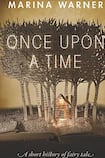
Novalis, the German romantic poet, wrote: "Alles ist ein Märchen" (Everything is a fairy tale). This declaration may come as a surprise to those who believe the opposite. But some of the most convincing interpretations of fairy tales, by great folklorists such as Max Lüthi or Bengt Holbek, demonstrate convincingly that the tales are metaphors for ordinary life. In the coded language of symbol and metaphor they chart the journey from childhood to adulthood. The Russian commentator Eleaser Meletinksji wrote, "It is even possible to say that the fairy tale begins with the break-up of one family and ends with the creation of a new one."
But it all depends on what you mean by fairy tale. Folklorists define the fairy tale as a story of magic or a "wonder tale", a description with which Marina Warner agrees. Fairies, elves and the like can feature but often don't make an appearance. The stories concern a young hero or, less often, a heroine who is thrown out of home or otherwise abandoned. He or she overcomes supernatural obstacles, usually with some magical assistance from a kind, older helper, and finally wins a prince or princess, and wordly advantage. The Types of International Folktales, an index, lists 450 different fairy tales or tales of magic, some of which were extraordinarily well known in the oral tradition in, for instance, Ireland, in the past, but only a handful are well known in current literary and cinematic media.
Some, but not enough, of this information is included in Warner’s short history.
The origin of
fairy tales
This is a pity. Few subjects are as interesting as the history of fairy tales; understanding it leads us to the roots of fiction. When did fairy tales begin? Where did they originate? Definite answers to these questions have never been found. Nevertheless, in the late-19th and early-20th centuries, painstaking folklore scholarship illuminated some of the mysteries surrounding the origins, and, to a greater extent, evolving histories of this most intriguing form of story.
The big problem is, of course, that as the early fairy tales, just like every other kind of tale, were told, not written down, their ultimate orgins are lost. Sound was not recorded until relatively recently. Historians of story before the 20th century must therefore rely on the written record.
Warner comments more than once, commendably, that mass literacy is a recent phenomenon. Indeed it is. But the historian of folk tales must bear in mind that even the most exclusive literacy is recent in the greater scheme of things. The very earliest writing dates back about 5,000 years. But when were the earliest stories told?
The most conservative estimate would suggest that storytelling began 20,000 years ago. It is likely that tales were told much earlier than that. Written literature of any kind is the merest tip of the storytelling, and poetic, iceberg.
The fairy tale, though, is a sophisticated genre, as Warner recognises. The tales are highly stylised, tightly structured and richly layered. They have a unique atmosphere, cast of character types, and props: cottages and castles, monsters and princesses, magic mountains and bottomless wells. They are so specialised that anyone who is familiar with folk narrative – child or adult – can recognize an example of the genre readily, even if they have never heard the specific tale before.
Many folklorists would suggest that European fairy tales found the highly developed form we are familiar with in the age of feudalism. But many episodes, ideas and motifs occur in the earliest literary sources and are of very ancient origin indeed.
Warner’s short history gives short shrift to the origins of the fairy tale in oral tradition. She acknowledges it but underestimates its centrality, to the detriment of a book that is a history of fairy tale. Her book is actually a series of reflections on literary fairy tales and other kinds of very loosely related fantasy stories. Her definition of fairy tale is too broad to be manageable, and she is a generaliser rather than a simplifier.
Potato soup
This work is confusing. To use one of her excellent chapter headings, it is potato soup.
The earlier chapters, which flit from The Arabian Nights to Shakespeare to WB Yeats to Tolkien, are the weakest. The strength of the book comes later, when Warner considers the history of the fairy tale in children's literature and looks at psychological schools of interpretation, feminist attitudes to tales, the political manipulation of fairy tales in Nazi Germany and Soviet Russia, and the uses of fairy tale in film. Her discussion of all these aspects of the history of fairy tale is useful; some of it is original, even profound.
Warner is always intelligent, writes with great elegance and bubbles over with new ideas and impressions. Many will enjoy her style, wide range of literary reference and infectious enthusiam. She is to be commended for attempting to write a popular account of this most fascinating genre, but the work fails to deliver the promise of its title.
Éilís Ní Dhuibhne is a novelist and shortstory writer











